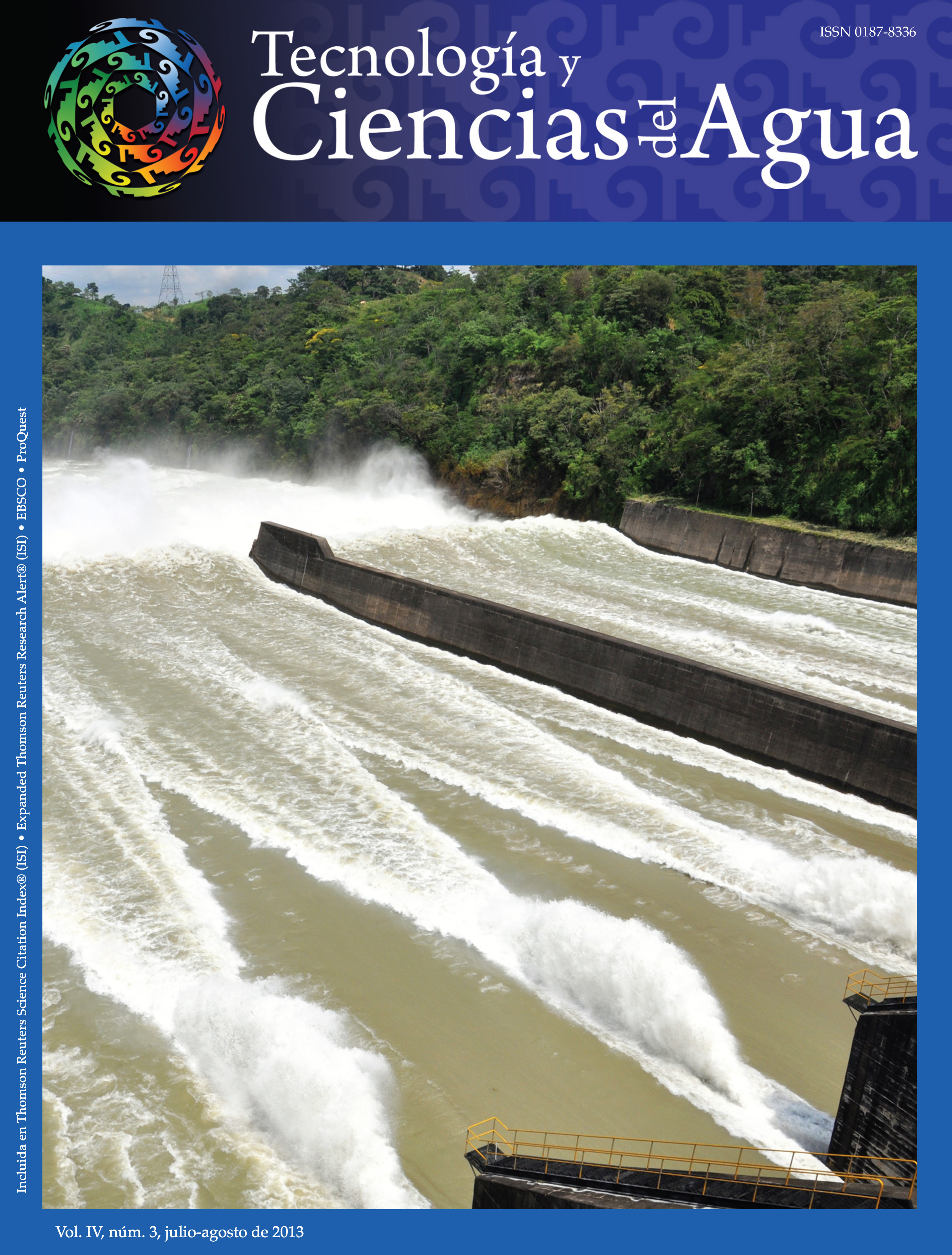Use of a rotating biological contactor system for treatment of septic tank effluents.
Keywords:
septic tank, organic loading rate, rotation velocity, rotating contactor biologicalAbstract
Although septic tanks is the most common wastewater treatment device used in the State of Yucatan, Mexico, it is a deficient purification process and therefore further treatment is needed. This work presents the results from a pilot-scale rotating biological contactor (RBC) process used to treat septic tank effluent. The RBC was operated with three organic loading rates (5.2, 15.9 and 17.2 g BOD5/m2·d) and two rotation velocities (15 and 30 rpm). COD, BOD5, TKN and NH3-N removal efficiencies were measured and a factorial analysis was carried out to determine the best operating conditions. The organic loading rate was shown to be the variable that had the greatest effect on the process, with lower loads and better efficiency (roughly 90% for COD and BOD5). Rotation velocity was significant for the removal nitrogenousmatter. The most efficient combination was found to be 5.2 g DBO5/m2·d at 30 rpm, which is equivalent to a tangential velocity of 16.49 m/min.
Downloads
Published
2013-08-03
How to Cite
Castillo-Borges, E. R., Santos-Ocampo, B., Méndez-Novelo, R. I., Pietrogiovanna-Bronca, J. A., Espadas-Solís, A., Quintal-Franco, C., & Pat-Canul, R. (2013). Use of a rotating biological contactor system for treatment of septic tank effluents. Tecnología Y Ciencias Del Agua, 4(3), 125–134. Retrieved from https://www.revistatyca.org.mx/index.php/tyca/article/view/369
Issue
Section
Articles
License
By Instituto Mexicano de Tecnología del Agua is distributed under a Creative Commons Attribution-NonCommercial-ShareAlike 4.0 International License. Based on a work at https://www.revistatyca.org.mx/. Permissions beyond what is covered by this license can be found in Editorial Policy.









